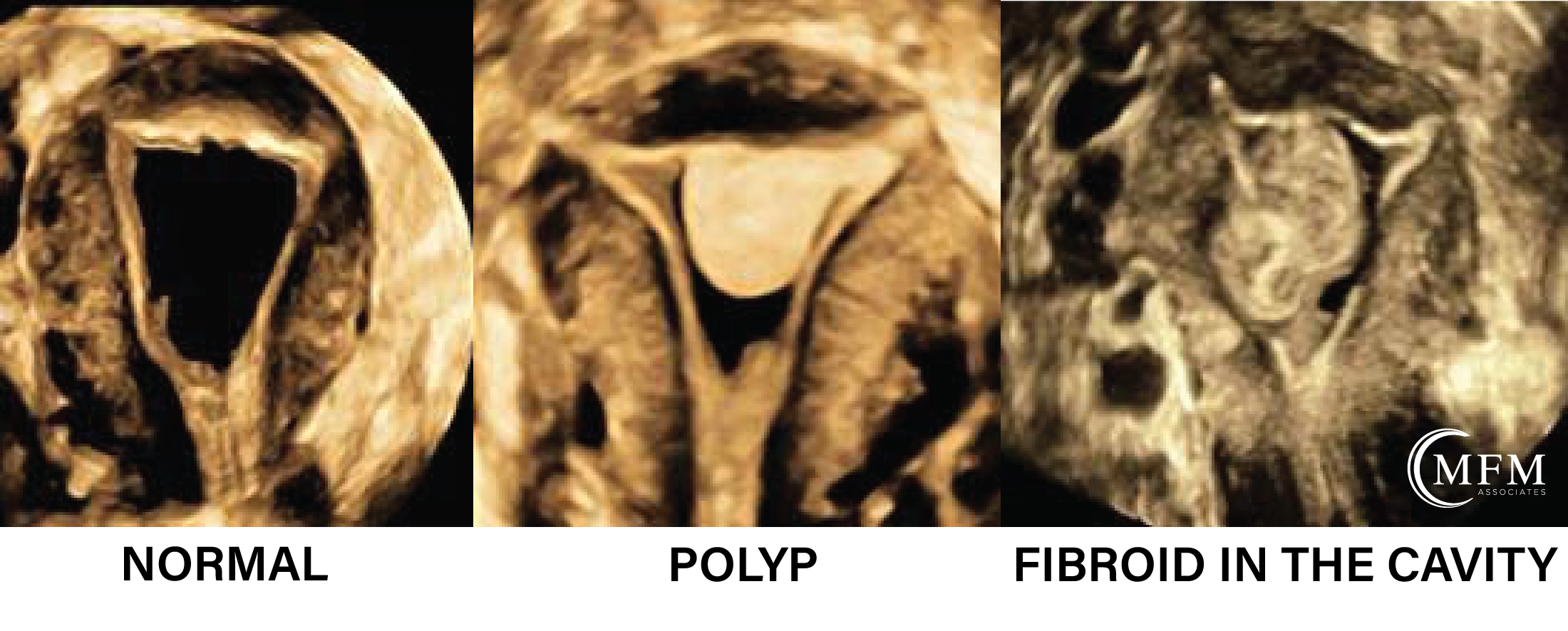What is saline infusion sonohysterography (or SIS)?
Sonohysterography is an ultrasound procedure that allows one to look inside the cavity of the uterus. This procedure is performed in the ultrasound unit and is less invasive than other procedures such as hysteroscopy. A sonohysterogram can show structures in the cavity of the uterus such as polyps or fibroids that may be causing symptoms such as pelvic pain, unexplained bleeding, or infertility.
The SIS is recommended if:
- You experience vaginal bleeding between periods.
- You have longer-lasting or heavier periods than normal.
- You have ongoing pelvic pain.
- You are unable to get pregnant (infertility).
- You have had two or more miscarriages.
- You have postmenopausal bleeding.
The SIS may reveal the following structures that may be causing symptoms:
- Fibroids
- Polyps
- Atypical uterus shape
- Thickened endometrium
- Intrauterine scars or Asherman syndrome
When should I schedule a sonohysterogram?
The SIS should be scheduled typically between days 3-10 of the menstrual cycle, counting from the first day of bleeding. This is because the lining of the uterus is thinnest at this time in the menstrual cycle, allowing the provider to see it more clearly.
People who are postmenopausal can undergo this procedure at any time.
People who are pregnant, have an intrauterine contraceptive device (IUD) in place or who have pelvic inflammatory disease (PID) should not undergo this procedure.
How to prepare for the procedure
You can eat and drink as normal on the day of your procedure and will likely be able to take all your medicines as normal. You should have a moderately full bladder for the transabdominal pelvic scan.
Your doctor may advise taking an over-the-counter pain medicine ahead of time (2-4 hours prior to the procedure) to help prevent discomfort.
How is it performed?
The SIS is performed in the ultrasound unit immediately after your period and before the 10th day of the cycle. In postmenopausal people can be performed anytime.
The procedure will then occur as follows:
First, a standard transabdominal and transvaginal pelvic ultrasound will be performed.
Secondly, a special tool called a speculum will be inserted into the vagina to allow easy access to your cervix (the cervix connects to the womb or uterus). The cervix will be cleaned. Subsequently, a thin tube called a catheter is passed through the cervix until it reaches the uterus. At this point, the speculum will be removed, and a transvaginal ultrasound probe will be introduced into the vagina. Saline solution (salty solution) is then injected through the catheter into the uterus and ultrasound pictures will be obtained.
An appointment SIS typically takes about 45-60 minutes to complete.

What can I expect after the procedure?
Some people may experience harmless and temporary symptoms including watery discharge, mild pain or cramping, or spotting over the following days.
You are free to return to normal routines following this procedure.
If you experience fever, intense pain, or changes in your vaginal discharge, please inform your healthcare provider right away.
Schedule an Appointment
To schedule an appointment or to learn more, please contact MFM Associates today.







